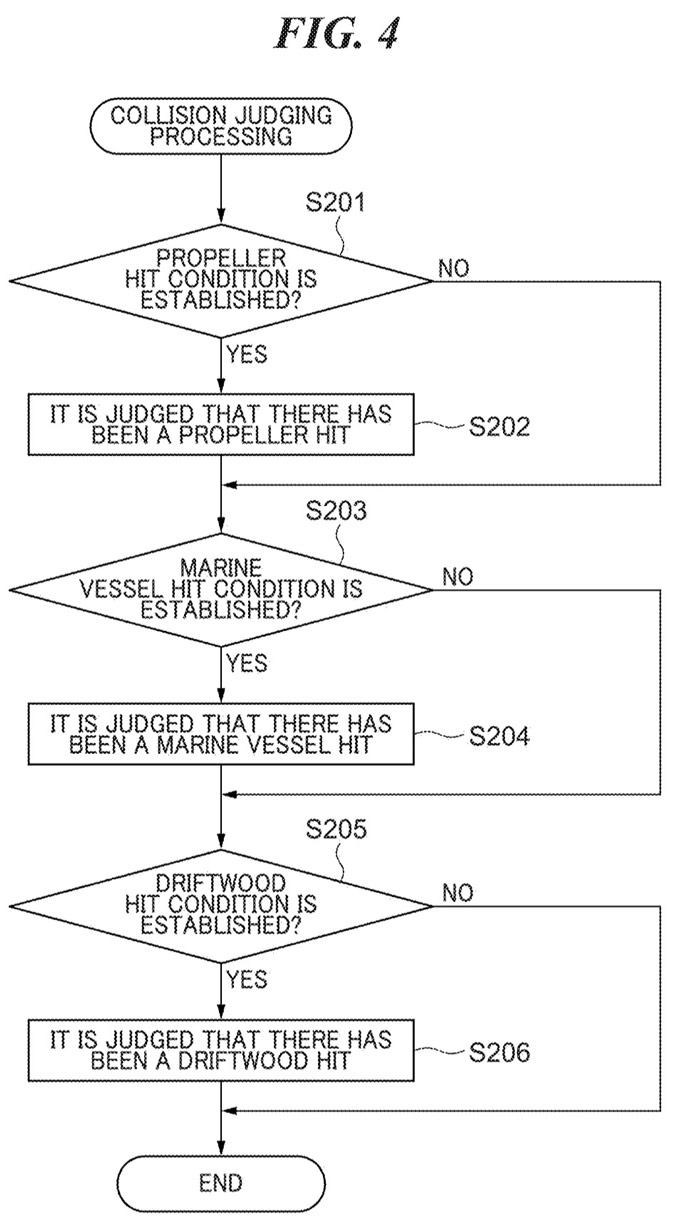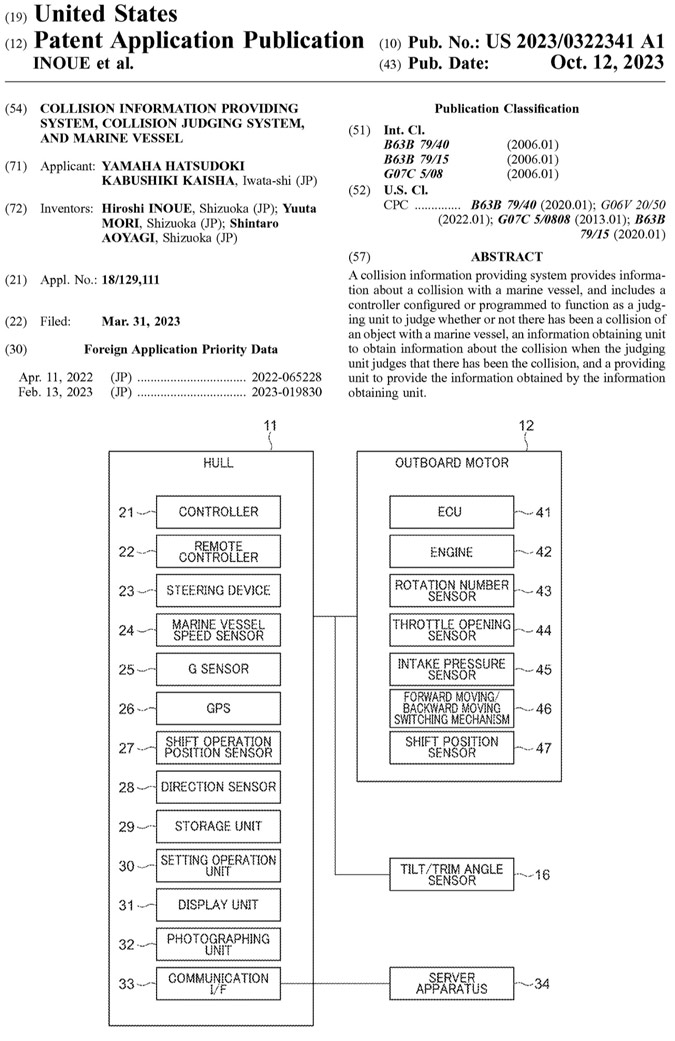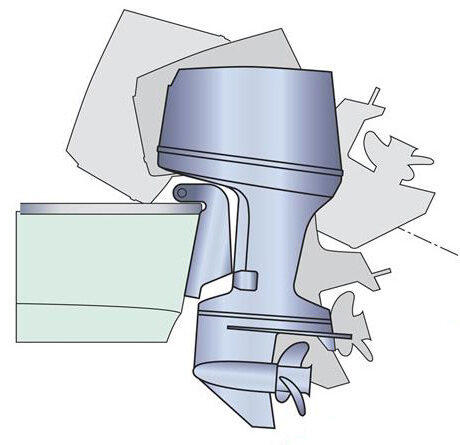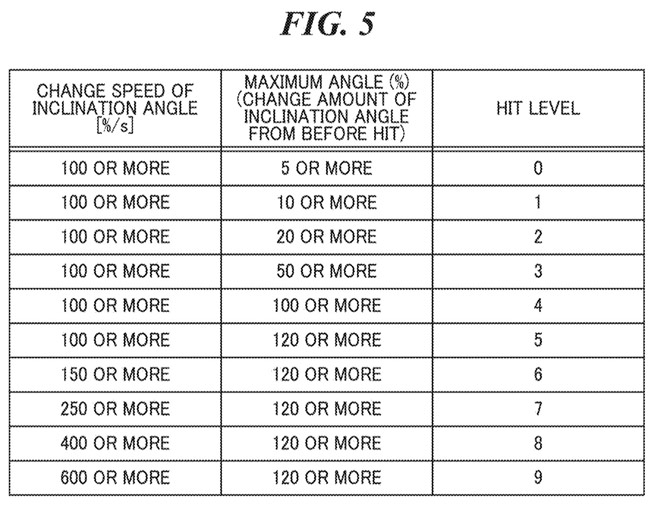Monitoring outboard log strikes: Yamaha Patent Application
Yamaha’s U.S. patent application, “Collision Information Providing System, Collision Judging System, and Marine Vessel” was published October 12, 2023.
Yamaha’s system classifies and monitors three different kinds of collisions.
1. Outboard motor / Marine drive collisions
2. Propeller collisions
3. Vessel collisions
These types of collisions are monitored. They are classified. Their intensity is rated. Additional data is recorded.
Collisions are classified by type: marine drive, propeller or vessel collision. (ECU) Engine Control Unit data is monitored and used in the decision making. ECU data used includes engine rpm, throttle setting, air intake pressure, trim position, and shift status (forward, neutral, reverse). The ECU also reports if the shift mechanism is in the process of shifting.
Yamaha refers to struck a log / log strike as a driftwood hit.
Yamaha’s Patent Application
A full copy of Yamaha’s patent application can be found on Google Patents.
The front page of Yamaha’s U.S. Patent Application 2023/0322341 A1 is shown below.
Yamaha notes their system applies to all types of marine drives. They specifically list jet boats outboard motors, inboard motors, and inboard outboard motors (stern drives).
Detecting and Classifying the Collision
The first step is detecting a collision by monitoring numerous data sources.
The next step is classifying the collision as being a vessel collision, propeller collision, or driftwood hit (log strike). Unrelated events such as jumping a wake are screened out during the classification process.
Yamaha uses the process outlined in Figure 4 below to classify collisions.

Yamaha outboard motor / marine drive collision monitoring patent application Figure 4: Collision Judging Process
The classification process is described in much greater detail in the patent application. The patent application notes the importance of rejecting other events that might register as a collision. Several such events are listed below.
1. Intentional sudden acceleration of the boat
2. Intentional sudden deceleration of the boat
3. Jumping a wave
4. Engine Cut-Off System (ECOS) / Kill Switch activation
5. Recognizing a propeller has multiple blades and may strike the same object multiple times during a single collision
6. Engine RPM is not stable for a period of time after the engine is started.
7. Intentional throttle position change
8. Low speed and low intensity collisions
Examples of the Classification Process
Some Indicators of a Marine Vessel Hit:
A data table of g acceleration values vs. vessel speed is one of the variables to determine if their was a marine vessel hit.
For example, a value of 1g at speeds of 10 kph or less is an indication a marine vessel hit.
While a value of 24 or more g at speeds of 40 kph or more is an indication a marine vessel hit.
Some Indicators of a Driftwood Hit / Log Strike:
Additional Impact Data Sensors & Sources
Additional data used in the decision process may include:
- Rate of Change of Engine RPM
- Video from the time of the incident
- Maximum tilt of the drive after the log strike
- How fast the drive was tilting
- Angular acceleration of the drive from an accelerometer
- Status of steering (was the boat in a turn
- Marine vessel speed sensor reports speed<"/li">
- Engine RPM may be used to estimate speed
- GPS location dataGPS may be used to determine boat speed.
- Direction of travel of the boat (is it going forward or backward)
- Temperature of Engine Cylinder Wall (indication of recent startup)
- Audio – sounds including voices on and around the boat at time of collision
- Weather
Missing From the Patent Application
Noticeably absent from the list of variables is hydraulic tilt cylinder pressure which has been used by others to determine intensity of log strikes.
Also absent was detecting a quick turn which was suggested by Honda as a means of detecting a near impact. Quick turns in conjunction with some of the other variables may improve impact classification.
The patent application does not specifically use the phrase “sensor fusion”. However, they do describe using multiple sensors to make a judgement if a collision occurred and what type of collision it was when not all sensors indicate the same result or some sensors may not be present.
Data Recording and Storage
Yamaha’s collision judging system stores data. The data is over written every few minutes unless there is a collision. If there is a collision, the collision is classified, and intensity of the collision is judged. Data surrounding the time before and just after the collision is permanently stored and/or transmitted to a remote site.
Yamaha suggested video could be saved from 30 seconds before the accident through 5 seconds after the accident.
Boat Rental Applications
Yamaha’s patent mentions their collision monitoring device has special application to the boat rental market. Marinas could check the system for any impacts when the boat comes back in after a rental. The system could wirelessly report to the marina. In addition, Yamaha’s collision system can estimate damage to the propeller after a collision.
Similarly, the system could be used by individuals who loan out or charter their boat. When the boat comes back they can check it’s status. They could even monitor their boat in real time.
While not specifically mentioned, they system could also be applicable to larger sailboats.
Outboard motor / marine drive collisions
The system appears to classify medium intensity log strikes as opposed to catastrophic log strikes. Their highest impact rating goes is awarded when the drive flips up an additional 120 percent of the normal trim range. As we understand it, that means a flip up of 120 percent of 15 degrees in addition to the trim at time of impact. If the drive was trimmed up 7 degrees, their highest impact rating would be given for the drive flipping up another 1.2 X 15 degrees. Or reaching a trim/tilt of a total of 7 degrees plus 18 degrees = 25 degrees.
Catastrophic strikes bring the outboard on up toward maximum tilt. In some instances outboard motors can break off after maximum tilt and flip into the boat. The engine may still be running as is the propeller.
Some drives break off before the drive clears the object. In that event, the failure would be obvious and would not need to be recorded.
Marine drives that are unable to clear the object or take an abnormal time to clear the object might not be classified as driftwood hits.
Judging Driftwood Hits / Log Strikes
Yamaha reveals a system in Figure 5 in which they use the rate of change of trim, along with the maximum change in trim/tilt to judge or rate the intensity of a log strike.
System Cost
The full system could require additional sensors, computing power, and a data storage system.
Yamaha notes “All of the data used in the above-described detection of the occurrence of the propeller hit performed by the ECU is able to be obtained by the existing sensors, etc. of the outboard motor. Therefore it is not necessary to add any additional sensors, etc. in order to perform the detection of the occurrence of the propeller hit, and it is possible to suppress the cost.”
While Yamaha does not mention it, this system could also be useful in detecting and recording human propeller strikes. One problem however, could be some propeller accidents occur shortly after the engine is started. Yamaha’s system does not detect propeller strikes till the engine cylinder walls warm up and engine RPM becomes more stable.
Patentability
Patentability is determined by patent examiners at the U.S. Patent Office. Several systems in this category (monitoring / recording log strikes) have already shown up in the patent system. We even suggested one ourselves.
We note Yamaha cites two of their previous Japanese Patents related to this invention. Thus, we may see one or more additional U.S. Patent Applications related to this device. Sometimes manufacturers use one patent to protect the methods used by the device and another patent to protect the device itself.
Related patents and inventions include
- Suzuki Japanese Patent JP5810881 (B2) – 2015-11-11. “Device, Method and Program for Controlling Collision of Outboard Motor”. Suzuki records tilt vs rate of change of tilt during impacts. See Approaches to Prevent Outboard Motors From Flipping Into Boats pages 167-169. Note the invention is incorrectly attributed to Yamaha in that publication. It is a Suzuki invention.
- Brunswick: Brunswick filed separate system and method patents for detecting and recording marine drive impacts including their severity. Both patents determine an underwater impact occurred and its severity by monitoring the rate of change of trim and comparing rate of change to a stored value. See Approaches to Prevent Outboard Motors From Flipping Into Boats: Supplement 1 pages 52-54.
- U.S. Patent 10,214,271 Systems and Methods for Monitoring Underwater Impacts to Marine Propulsion Devices. Issued 26 February 2019. This patent has the METHOD claims.
- U.S. Patent 10,577,068 Systems and Methods for Monitoring Underwater Impacts to Marine Propulsion Devices. Issued 3 March 2020. This patent has the SYSTEM claims.
- Honda was issued two patents for a marine drive impact recording system. See Approaches to Prevent Outboard Motors From Flipping Into Boats: Supplement 1 pages 57-60.
- U.S. Patent 10,272,977 Boat Navigation Assist System, and Navigation Assist Apparatus and Server of the System. Issued 30 April 2019.
- U.S. Patent 10,746,552 Boat Navigation Assist System, and Navigation Assist Apparatus and Server of the System. Issued 18 August 2020.


